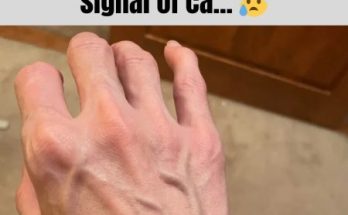Understanding Skin Irritation and Infections in the Pubic Area: Causes, Symptoms, and Prevention
Skin health is an essential part of overall well-being, and issues in sensitive areas such as the groin or pubic region can be both uncomfortable and concerning. The image above illustrates different stages or manifestations of skin problems commonly seen in this area, including inflamed hair follicles, skin irritation, and red bumps or pustules. These are typically signs of conditions like folliculitis, ingrown hairs, or contact dermatitis, each of which requires specific care and attention.
Common Causes of Skin Issues in the Groin Area
1. Ingrown Hairs:
The image’s top-left section shows several inflamed pustules, which are often caused by ingrown hairs. These occur when shaved or plucked hair grows back into the skin instead of outward. This can cause inflammation, redness, and pus-filled bumps. Shaving the pubic area, wearing tight clothing, or having curly hair increases the likelihood of developing ingrown hairs.
2. Folliculitis:
Folliculitis is an infection of the hair follicles, often caused by bacteria such as Staphylococcus aureus. This can lead to clusters of red or white-headed pimples around hair follicles, as seen in the photo. Folliculitis can be itchy, painful, and may result in scarring or spreading if not treated properly.
3. Contact Dermatitis:
The bottom illustration highlights red, irritated patches on the inner thigh and groin area, which may be due to contact dermatitis. This condition arises from allergic reactions or irritants such as soaps, lotions, fabric softeners, or latex. Contact dermatitis typically causes itching, redness, and sometimes blistering.
4. Fungal Infections (e.g., Jock Itch):
Warm, moist environments like the groin are prone to fungal infections such as tinea cruris, more commonly known as jock itch. It typically presents as a red, scaly rash with defined borders and is intensely itchy. The cartoon-style image showing red bumps spreading on the thigh could be indicative of such a condition.
Symptoms to Watch Out For
-
Red or white bumps, particularly after shaving
-
Itching, burning, or stinging sensations
-
Pus-filled lesions
-
Pain or tenderness in affected areas
-
Spreading rash or irritation
-
Dry, flaky skin or scaling
These symptoms, while sometimes benign, can also indicate infections or allergic reactions that need medical attention. If they persist for more than a few days, worsen, or are accompanied by fever or spreading redness, seeking a healthcare professional’s advice is crucial.
Prevention Tips
1. Proper Hair Removal Techniques:
When shaving the pubic area, use a clean, sharp razor and shave in the direction of hair growth. Avoid dry shaving, and use a gentle shaving cream or gel. Trimming instead of shaving can also reduce the risk of ingrown hairs.
2. Wear Loose, Breathable Clothing:
Tight clothing made from non-breathable fabrics can trap sweat and bacteria, increasing the risk of irritation and infection. Opt for cotton underwear and change it daily, especially after exercising or sweating.
3. Maintain Good Hygiene:
Keep the groin area clean and dry. After showering, ensure the area is thoroughly dried before dressing. Avoid using heavily scented soaps or powders that can trigger allergies.
4. Exfoliate Gently:
Occasional exfoliation can help prevent ingrown hairs by removing dead skin cells, but be cautious not to overdo it, as excessive scrubbing can irritate the skin.
5. Avoid Sharing Personal Items:
Sharing razors, towels, or undergarments can spread bacteria or fungi. Always use personal hygiene tools and keep them clean.
Treatment Options
-
Over-the-Counter Creams: Antibacterial or antifungal creams can help treat mild infections and fungal conditions like jock itch.
-
Warm Compresses: Applying a warm compress to the affected area can reduce inflammation and encourage drainage in cases of ingrown hairs or minor infections.
-
Medical Treatment: Persistent or severe symptoms may require antibiotics, prescription creams, or other treatments from a healthcare provider.
-
Avoid Popping Bumps: While it may be tempting, popping pus-filled bumps can worsen infections or lead to scarring.
Conclusion
The pubic area is a sensitive part of the body, and skin issues there can be particularly uncomfortable. However, with proper hygiene, careful grooming habits, and attention to early symptoms, many of these conditions can be prevented or easily managed. Understanding what causes irritation or infection—and knowing when to seek medical advice—can help you maintain healthy, comfortable skin in even the most delicate areas.



